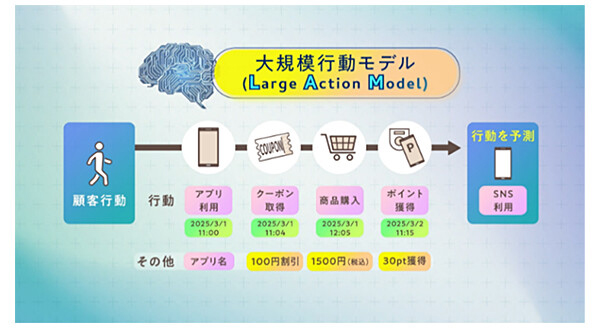NTT and NTT docomo Establish AI Technology “LAM”

NTT and NTT docomo have established the Large Action Model (LAM), an AI technology that predicts customer needs and utilizes them in sales promotion strategies based on time-series data organized in the “4W1H” (who, when, where, what, and how) format obtained from various customer touchpoints, including online and in-store interactions. This technology enables one-to-one marketing tailored to each individual’s needs.
LAM is a generative AI technology with a structure similar to LLM, specializing in labels and numerical values.
In establishing LAM, NTT is responsible for R&D and tuning methods. NTT docomo is responsible for integrating customer data, building the LAM, and verifying its effectiveness in sales promotion strategies.
As a result, the company confirmed that the order rate for mobile and smart life-related services through telemarketing increased by up to 2x compared to conventional methods.
One example of an application of LAM is the medical field. Patients’ medical histories are recorded in electronic medical records as time-series data, and changes in disease condition and the order of medication prescriptions contain clinically important meanings.
Analyzing these patterns is useful for supporting treatment.
The two companies are working on applying LAM to support diabetes treatment.
In the energy sector, satellite and ground observations of weather phenomena are also recorded as time-series data. Solar power generation companies use this time-series data to predict future solar radiation, develop power generation plans, and trade electricity with retail electricity providers.
Fluctuations in the power generation output of geographically adjacent solar power generation facilities reflect the impact of cloud movement and location on solar radiation, and analyzing these patterns is useful for improving the accuracy of solar radiation forecasts.
The two companies are also working on applying LAM to solar radiation prediction.
※Translating Japanese articles into English with AI
